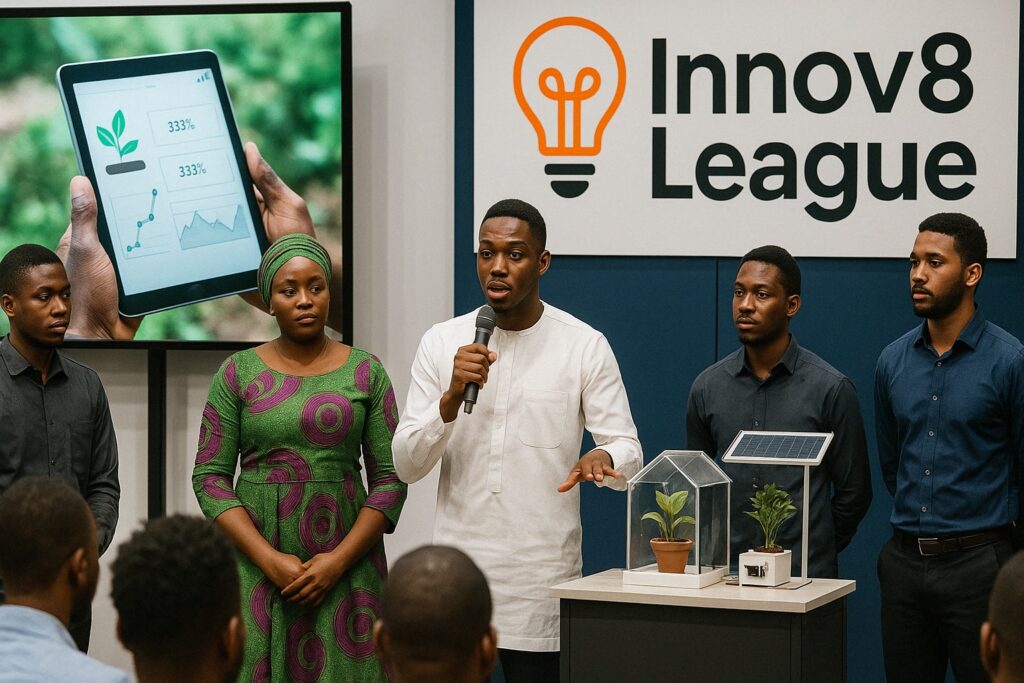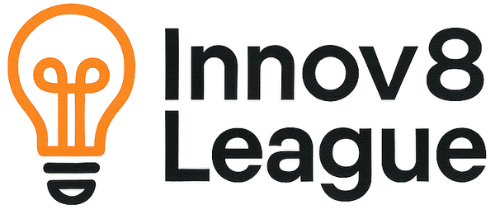Every year, thousands of bold thinkers step onto the innovation stage, pitching their ideas in competitions like Innov8League. Some walk away with trophies, others with recognition — but the real prize often lies beyond the stage: the opportunity to turn that pitch into a thriving, funded startup.
Winning (or even participating) in a competition gives you momentum, credibility, and access — but the journey from pitch deck to successful startup demands strategy, persistence, and smart execution.
In this guide, we break down how you can leverage your competition experience to build something real, scalable, and fundable.

1. Analyze and Integrate Judge Feedback
One of the most immediate advantages of participating in an innovation competition is access to expert feedback.
After your pitch, take time to:
- Review judges’ written comments carefully.
- Listen to verbal feedback from pitch sessions or judging panels.
- Identify recurring themes in critiques — are they concerned about your market size, revenue model, or scalability?
Actionable Step:
Create a two-column document:
- Column 1: List every piece of judge feedback.
- Column 2: Note how you will address or validate each point.
Why it matters:
This step isn’t just about “fixing” your pitch — it’s about strengthening your business fundamentals. Investors love founders who can listen, adapt, and iterate intelligently.
2. Validate the Market Before Building
Judges might have loved your idea. Friends might think it’s genius.
But what truly matters? Real-world validation.
Validation means:
- Talking to potential customers — not just friends or fellow entrepreneurs.
- Conducting surveys to test demand.
- Launching a basic landing page with a sign-up form and measuring interest.
Tip:
Don’t overbuild based on assumptions. Instead, validate one key hypothesis:
“Will people actually pay for or use this solution?”
Example:
Dropbox famously started with a 3-minute explainer video — before writing a single line of backend code. They validated demand before building.
3. Develop a Minimum Viable Product (MVP)
After validation, it’s time to build an MVP — a simplified, testable version of your product or service that demonstrates your solution works.
Key principles for a strong MVP:
- Focus on core functionality — the one thing your product must do well.
- Build it fast and cheap using no-code tools (e.g., Glide, Adalo, Webflow) or simple development.
- Launch it to a small group of early adopters and gather feedback.
Remember:
Your MVP is not about perfection. It’s about learning: Does the core idea solve a real problem? Are users willing to pay or engage?
Why investors care:
When you show you’ve launched something — even a rough MVP — and gained initial traction, you drastically reduce their risk.
4. Leverage Your Competition Credibility
One of the most underutilized assets of participating in competitions is the credibility it gives you.
If you’ve been a finalist, semi-finalist, or winner at Innov8League:
- Highlight this on your website, LinkedIn profile, and startup materials.
- Add logos (“As seen at Innov8League 2025”) to pitch decks and email footers.
- Mention any press coverage or notable judges who praised your idea.
Why it matters:
Investors and partners are bombarded with pitches daily.
Credibility markers — like competition wins — help cut through the noise and establish initial trust.
5. Expand Your Network and Build Strategic Relationship
Your competition journey likely introduced you to:
- Judges (potential mentors or investors)
- Fellow contestants (future collaborators or team members)
- Sponsors (corporate partners or early customers)
Post-competition networking tips:
- Send thank-you emails to judges and organizers.
- Connect with fellow participants on LinkedIn.
- Ask for introductions (“Would you mind connecting me to anyone who could advise on X?”).
Pro Tip:
Relationships compound over time.
Today’s casual chat with a fellow contestant could become tomorrow’s investment lead.
6. Craft an Investor-Ready Pitch Deck
While your competition pitch was designed to impress judges quickly, an investor pitch requires deeper storytelling, financials, and clear scalability.
Essential slides for your fundraising deck:
- Problem
- Solution
- Market Opportunity (with data!)
- Product Demo or Screenshots
- Business Model (how you’ll make money)
- Traction / Milestones
- Team (highlight relevant expertise)
- Financial Projections
- Funding Ask (how much you’re raising and for what milestones)
Pro Tip:
Use storytelling to humanize your pitch. Investors invest in people solving real problems, not just feature lists.
7. Choose the Right Funding Path
There’s no single “correct” route to fundraising.
Depending on your startup’s maturity and traction, you might consider:
- Bootstrapping: Start lean and self-fund while gaining initial traction.
- Angel Investors: Ideal for early-stage ideas validated by competition credibility.
- Startup Accelerators: Apply to programs like Y Combinator, Techstars, or Seedstars. They often love founders with competition experience.
- Venture Capital: For startups that already show strong traction and scalability.
- Grants and Innovation Funds: Many governments and NGOs offer non-dilutive funding for innovative solutions.
Key Rule:
Start small, prove traction, raise bigger later.
Raising too much too early without validation can set unrealistic expectations and pressure.
8. Execute Relentlessly and Document the Journe
Once you have your MVP and early adopters, focus on:
- Building consistently
- Capturing user feedback
- Showing measurable progress month after month
Share milestones publicly:
Post on LinkedIn when you hit user milestones, get media coverage, or onboard partners.
Why:
Visible execution builds momentum — and momentum attracts investors.
🔥 Real-World Example: AirBnB
AirBnB started by renting out air mattresses in their own apartment during a conference — and bootstrapping their initial idea.
They participated in multiple competitions and startup events before joining Y Combinator — where they fine-tuned their product, pitched effectively, and ultimately became a billion-dollar company.
Moral of the story:
It wasn’t the “airbed” idea that changed everything — it was the execution after the pitch.
Conclusion: Your Pitch Is the Launchpad — Not the Finish Line
Competing in an innovation contest like Innov8League gives you more than a chance to win — it gives you:
- Validation
- Credibility
- Exposure
- Access to a valuable network
But it’s what you do next that matters most.
By refining your idea, validating your market, building an MVP, leveraging your competition success, and executing relentlessly, you can transform your pitch into a funded, thriving startup.
🚀 The stage was just your starting point. The real world is waiting. Build boldly.


This is a useful post for finding broken links within the website, what about links pointing outwards that are broken? I can use a free web service but wondered if this was possible.
Great tool! I am using a redirect plugin to send all my 404’s to my home page but I think it’s slacking sometimes.